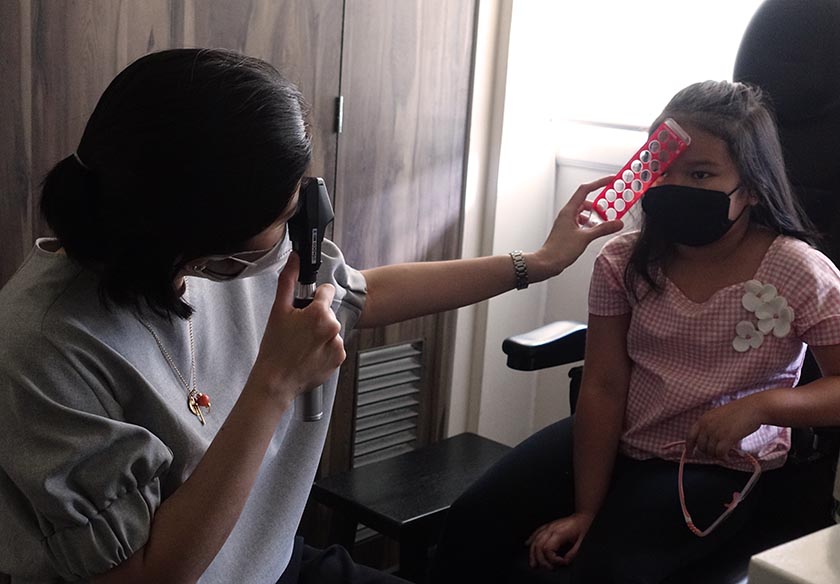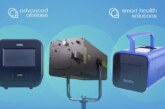
August is Sight Saving Month and Cardinal Santos Medical Center (CSMC) is shedding light on childhood myopia which has emerged as a significant public health concern.
The World Health Organization (WHO) defines myopia as a refractive error in which rays of light entering the eye parallel to the optic axis are brought to focus in front of the retina, resulting in blurred images. Dr. Kimberly Cotaoco a consultant specializing in Pediatric Ophthalmology and Strabismus at Cardinal Santos describes it as seeing close objects clearly but objects that are further away will appear blurred.
While myopia affects both adults and children, she emphasizes the importance of being diagnosed at an early age. “Due to their highly developing eyes, the progression of myopia in children can lead to long-term consequences such as lazy eye, strabismus, and a range of ocular diseases.”
Childhood myopia’s prevalence is increasing, affecting 85-90% of young adults in some Asian countries. Dr. Cotaoco highlights the role of genetics and environmental factors in myopia development, noting that children with myopic parents have a higher risk of developing it themselves. She also cites early gadget exposure, reduced outdoor time, and increasingly demanding academic expectations from children as contributing factors.
Recognizing Myopia in Children
Parents should be vigilant for signs in young children as they may not be able to accurately express their experience with blurry vision. According to Dr. Cotaoco, “Signs and symptoms may be subtle – ranging from squinting (narrowing of the eyes to see better), going very close to the blackboard, lack of confidence in school and frequent mistakes when copying, and presence of strabismus (misalignment of the eyes). In these cases, pre-school screening is essential, and the feedback from their educators is most valuable.”
The early detection of childhood myopia is so essential that Republic Act 11358, also known as the National Vision Screening Act, has been enacted in 2019 with the intention of screening the kindergarten-age group for possible errors of refraction.
Encouraging kids to take an active role in their treatment
Dr. Cotaoco believes that it’s essential for kids to take an active part in their treatment. She says, “Most kids nowadays are very involved in their treatments, and discussing with them what works and what can worsen their condition, what activities they can consider participating in, helps them understand better.”
And it’s not just the kids. Parents and guardians need to also be observant of the children if they are exhibiting any of the possible symptoms of myopia. As an ophthalmologist, Dr. Cotaoco also ensures
that she spends ample time with the adults as she does with the children, not just explaining, but also actively listening to their queries. In addition, she emphasizes the importance of follow-ups and consistency with treatment.
Developing healthy habits for better eyesight
The use of gadgets has become an integral part of daily life, more so with children who are exposed to them at an earlier age. Dr. Cotaoco advises providing other positive experiences to lessen kids’ exposure to screens. “More than setting a time limit for screen time, I think it is more important to encourage alternative activities, especially those that involve outdoor play.” She also adds, “Exposure to natural sunlight, is recommended, and found to have a protective effect. No exact guidelines have been released, but results from clinical trials are very promising.”
Rewarding results
In over eight years of practice, Dr. Cotaoco still gets a special feeling every time one of her patients responds positively to treatment. She shares, “The sheer joy of a child seeing clearly after wearing prescription spectacles, is truly fulfilling for me. Being able to give sight, and seeing them grow in confidence, is worthwhile.”
And along with the rest of the ophthalmology department at Cardinal Santos, she stresses the need to be steadfast in providing children’s eye health. “Our role as ophthalmologists is to never tire in providing the platform to screen and detect preventable eye diseases such as errors of refraction. We also need to be constantly updated to the new treatment modalities and offer what is sound and based on evidence.
At Cardinal Santos Medical Center, the Outpatient Department has dedicated ophthalmology clinics that are manned by competent residents-in-training and headed by its fellow in Pediatric Ophthalmology. They provide screening to younger children, perform adequate refraction, a thorough ophthalmologic evaluation, and provide the necessary resources for the patient’s treatment.
The hospital’s newly revamped Eye Center also provides comprehensive screening, refraction, and treatment for childhood myopia, ensuring optimal care for young patients.
In an era marked by technological advancement, Dr. Kimberly Cotaoco’s insights provide a compass for parents and guardians, enabling them to navigate the landscape of childhood myopia with knowledge and care. Through early detection, proper intervention, and fostering healthy habits, children’s vision can be safeguarded, promoting a future of clear sight and bright possibilities.
![]()







